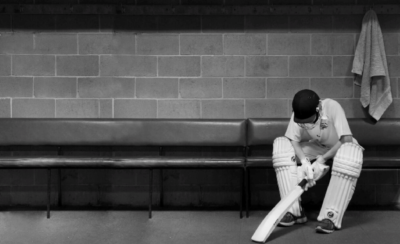We all love watching cricket right?
Some like watching all forms, some like watching certain forms over others.
Most people view watching cricket as a form of entertainment in their down time, but what if we could turn watching cricket into a valuable learning tool to improve our own cricket?
Well, maybe you can…
I think the first port of call is to actually be present and conscious of what you’re watching. That means your focus and attention needs to be on that and nothing else (the same as when you want to learn or get better at anything).
Here’s five ways you can improve your own game by watching cricket (live or on TV).
1. PREDICT WHAT THE CAPTAIN WILL DO
A great way to learn is to put yourself in the shoes of the best.
What would Paine do? What would Williamson do? What would Kohli do? What would Root do?
When you’re watching cricket see if you can predict what bowler the captain will bring on, when they will bring them on, when they’ll make a change, when they’ll declare, when they’ll go from pace to spin or vice versa.
You’ll get instant feedback on wether you’re thinking the same as them and start to absorb their way of thinking.
Also ask yourself why you think they did or didn’t do it.
You can even turn this into a little game and write your predictions down and keep score. Challenge a mate or family member to play along with you.
2. PREDICT WHAT THE BATSMEN/BOWLERS WILL DO
Watch the batters and bowlers in action closely.
See If you can pick up on their strengths and plans and then predict what they’re going to do next over or even next ball.
Predict what type of ball the bowler will bowl or what shot the batsman will play.
This can be a bit easier in shorter form cricket when there’s a bit more action and plans can change quickly.
It’s doable in test cricket - plans just tend to go for longer periods.
Doing this will make you much more aware and you’ll be learning how elite players go about it.
Again you can turn this into a little competition.

3. TAKE NOTICE OF AND REVIEW PLANS
Every time a bowler finishes a spell or a batter gets out, see if you can summarise their plan and review whether it worked or not.
It doesn’t have to be a novel, an example would be something like this;
“David Warner’s plan was to pounce on width outside off and shorter balls. He looked hesitant to drive unless the ball was very full and was looking to score when the bowler erred in length or got too straight. He was leaving as many balls as possible in the corridor. The plan was working well, he was scoring freely but lost his wicket when he went away form his plan and tried to drive a ball that wasn’t quite there.”
You can do the same for bowlers based on their lengths, lines and field settings.
We've got some great resources and training videos in our online academy - another great way to improve your game without going to the nets. You can learn more about it and grab a free trial by clicking the image below.
4. LOOK AT FIELDS AND ASK WHY?
It can be a bit harder on TV because you can’t see the full picture sometimes but do your best. It’s a good exercise for when you’re watching live.
Analyse every single field that is set at the start of the over and ask why?
Why is there a fielder there? Why have they not got a fielder there? Where are they looking to exploit this batter?
Consistently doing this is going to train your brain to be able to problem solve and develop plans out in the middle.
5. TAKE NOTES
Whenever you’re doing the above four, take notes!
Two reasons…
- The act of writing something down with pen and paper has been proven to increase retention. Meaning you’re going to learn and remember more.
- If you do it for a whole summer you’re going to have an awesome little playbook of lessons and learnings from elite players - gold!
All pretty simple stuff but the purpose behind all five activities is to increase your engagement and awareness of what’s going on. The simple act of that alone will improve your game.
Author: Nick Fitzpatrick - ACI Co Founder & Coach










